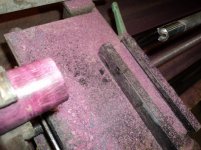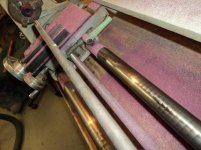I once soaked a maple shaft dowel in water based sealer for a few days. Then cut through it and the sealer had made it all the way through the shaft. The shaft warped pretty bad from being wet for that long. But the material went all the way through. I have seen Nelsonite take dried ink marker from the end of a shaft and carry it several inches down into a shaft in about 3 minutes. That broke me from using ink on the end of shafts.
Last edited:






